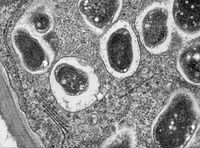
Phytoremediation potential of Miscanthus sinensis And. in organochlorine pesticides contaminated soil amended by Tween 20 and Activated carbon
Sign Up to like & getrecommendations! Published in 2020 at "Environmental Science and Pollution Research"
DOI: 10.1007/s11356-020-11609-y
Abstract: The organochlorine pesticides (OCPs) have raised concerns about being persistent and toxic to the environment. Phytoremediation techniques show promise for the revitalization of polluted soils. The current study focused on optimizing the phytoremediation potential of… read more here.
Keywords: sinensis; potential miscanthus; phytoremediation potential; organochlorine pesticides ... See more keywords

Iron enriched quinoa biochar enhances Nickel phytoremediation potential of Helianthus annuus L. by its immobilization and attenuation of oxidative stress: implications for human health.
Sign Up to like & getrecommendations! Published in 2023 at "International journal of phytoremediation"
DOI: 10.1080/15226514.2023.2200834
Abstract: The present study was performed to assess Ni-immobilization and the phytoremediation potential of sunflower by the application of quinoa stalks biochar (QSB) and its magnetic nanocomposite (MQSB). The QSB and MQSB were characterized with FTIR,… read more here.
Keywords: qsb mqsb; oxidative stress; phytoremediation; human health ... See more keywords

Selection of Species with Soil Phytoremediation Potential After the Application of Protox-Inhibiting Herbicides
Sign Up to like & getrecommendations! Published in 2018 at "Planta Daninha"
DOI: 10.1590/s0100-83582018360100074
Abstract: ABSTRACT: The objective of this work was to evaluate the phytoremediation potential of summer-grown species planted in soils contaminated with the herbicides fomesafen or sulfentrazone. In a greenhouse, doses of fomesafen (0.0, 0.125, 0.25 and… read more here.
Keywords: velvet bean; phytoremediation potential; selection species; sulfentrazone ... See more keywords

Phytoremediation Potential of Native Plant Species in Mine Soils Polluted by Metal(loid)s and Rare Earth Elements
Sign Up to like & getrecommendations! Published in 2023 at "Plants"
DOI: 10.3390/plants12061219
Abstract: Mining activity has an adverse impact on the surrounding ecosystem, especially via the release of potentially toxic elements (PTEs); therefore, there is an urgent need to develop efficient technologies to remediate these ecosystems, especially soils.… read more here.
Keywords: contamination; earth elements; rare earth; phytoremediation potential ... See more keywords

Phytoremediation Potential of Crop Plants in Countering Nickel Contamination in Carbonation Lime Coming from the Sugar Industry
Sign Up to like & getrecommendations! Published in 2020 at "Plants"
DOI: 10.3390/plants9050580
Abstract: The phytoremediation potential of four crop species cultivated on carbonation lime coming from the sugar industry with water-soluble nickel (Ni) exceeding the Italian legal limit of 10 µg L−1 was assessed. Two autumn–winter species (spinach… read more here.
Keywords: lime coming; phytoremediation potential; sugar industry; lime ... See more keywords

Phytoremediation Potential, Photosynthetic and Antioxidant Response to Arsenic-Induced Stress of Dactylis glomerata L. Sown on Fly Ash Deposits
Sign Up to like & getrecommendations! Published in 2020 at "Plants"
DOI: 10.3390/plants9050657
Abstract: Arsenic (As) from coal fly ash can be released into soil/groundwater, presenting a global threat to the environment and human health. To overcome this environmental problem, phytoremediation represents an urgent need, providing ‘green’ cleanup of… read more here.
Keywords: dactylis glomerata; phytoremediation potential; stress; ash deposits ... See more keywords

Phytoremediation Potential of Freshwater Macrophytes for Treating Dye-Containing Wastewater
Sign Up to like & getrecommendations! Published in 2020 at "Sustainability"
DOI: 10.3390/su13010329
Abstract: Phytoremediation is a promising green technology for the remediation of various industrial effluents. Notably, aquatic plants are widely applied to remove dyes and toxic metals from polluted environments. In the present study, the phytoremediation potency… read more here.
Keywords: aquatic plants; potential freshwater; dyeing effluent; phytoremediation potential ... See more keywords